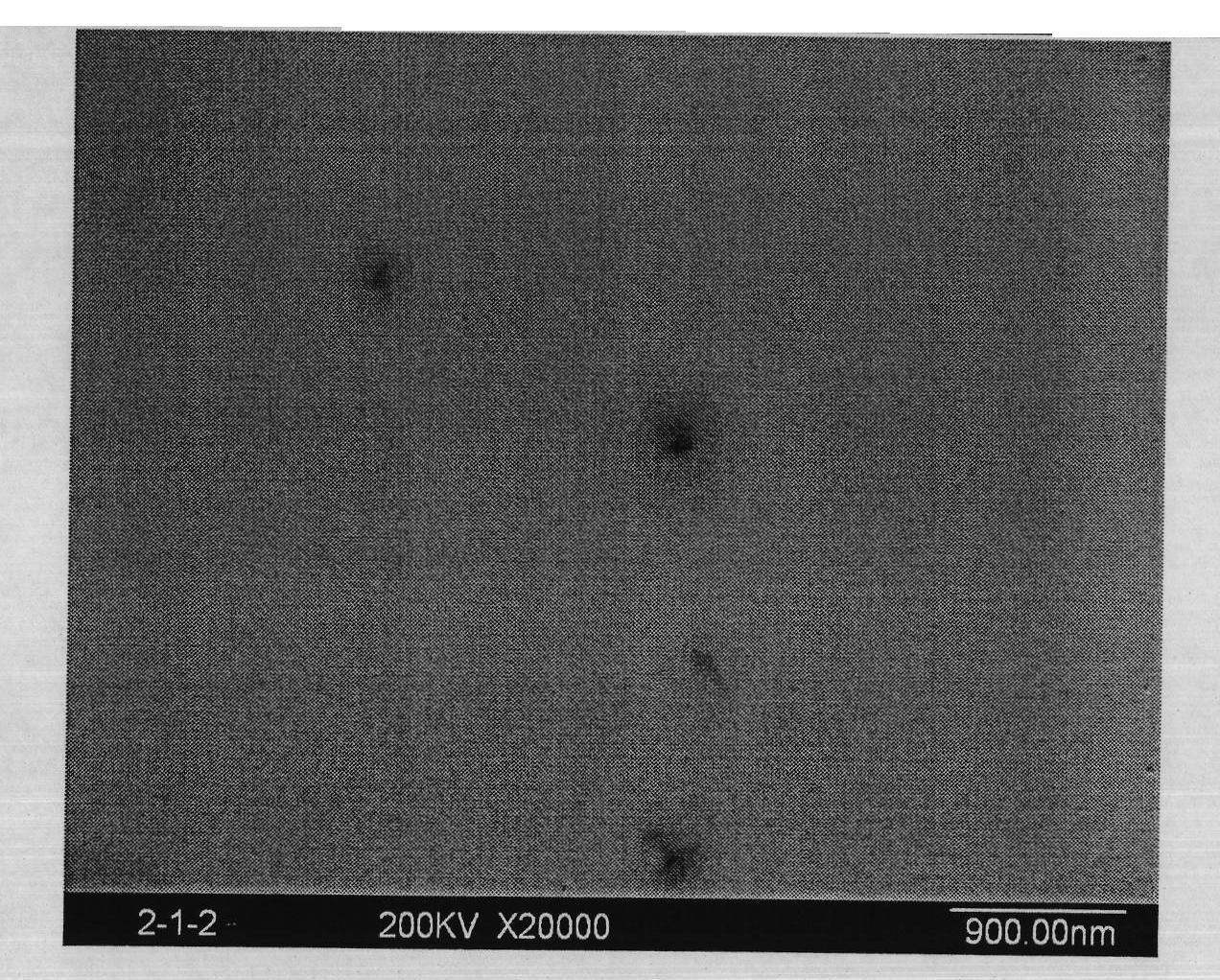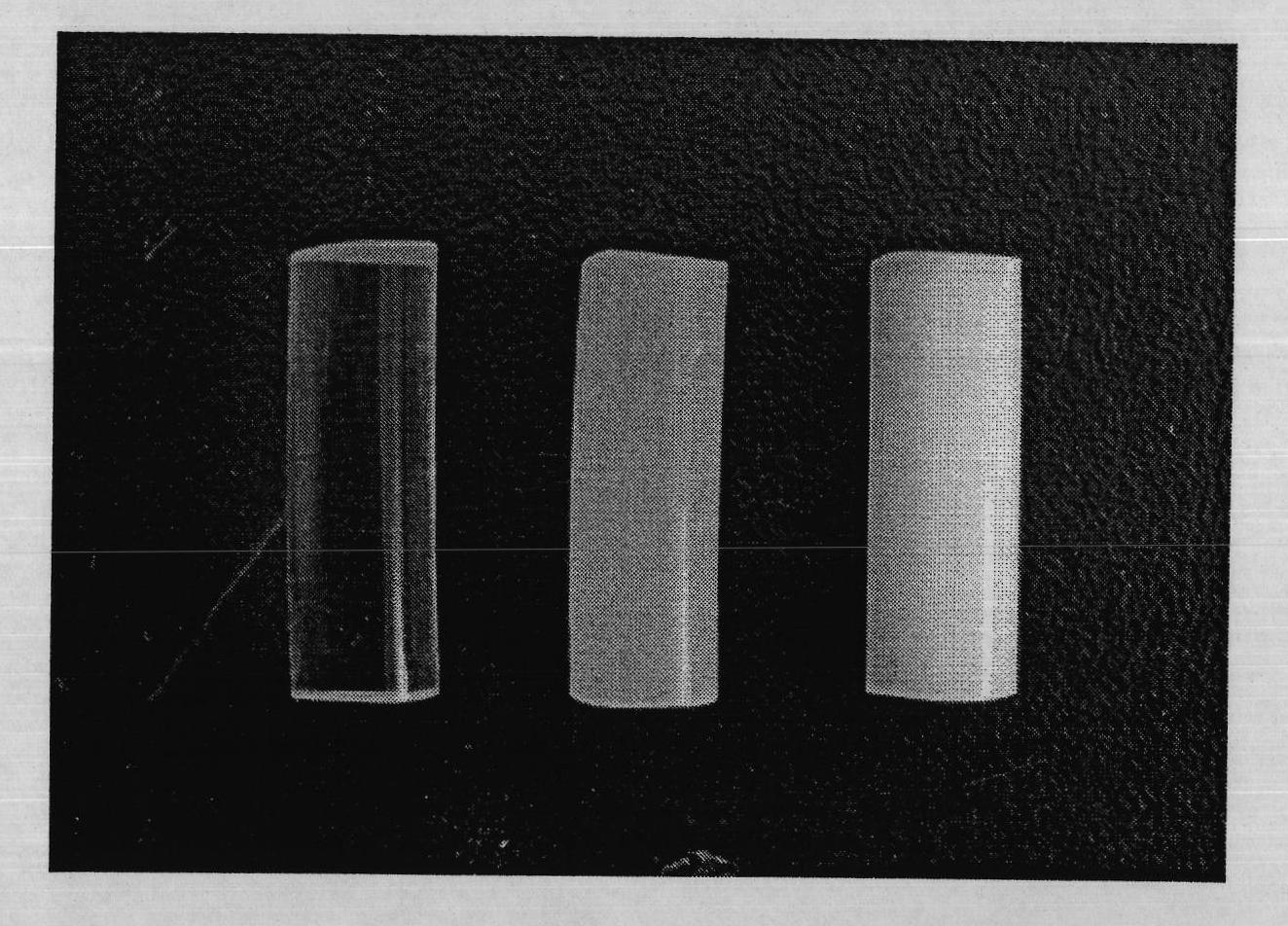Method for preparing photo-curable bone repairing material from epoxy group-containing siloxane-clad modified hydroxyapatite
A hydroxyapatite and siloxane technology, which is applied in the field of biocomposite medical materials, can solve problems such as inorganic particle/polymer matrix interface fracture, achieve biocompatibility, improved mechanical properties, simple preparation process, and good biological properties. Effects of Compatibility and Mechanical Properties
- Summary
- Abstract
- Description
- Claims
- Application Information
AI Technical Summary
Problems solved by technology
Method used
Image
Examples
Embodiment 1
[0018] Weigh 5.0 g of nano-hydroxyapatite, suspend it in 40.0 mL of ethyl acetate, stir it electromagnetically, control the temperature at 5° C., and protect it with nitrogen. Add dropwise an ethyl acetate solution in which 10.0 g of propyltriethoxysilane isocyanate and dibutyltin dilaurate are dissolved, react for 3 hours, wash, centrifuge, and dry in vacuo. Take 0.2g of the dried sample, 1.0g of water, 3.0g of 3-glycidyloxypropyltrimethoxysilane, and the photoinitiator diazonium salt content is 1.0% of the system, add 0.1mL of hydrochloric acid and 0.2mL of ethanol, Let the solution system slowly form a white gel, at a light intensity of 10mW / cm 2 , Polymerized for 5 minutes under a UV lamp with a wavelength of 200-500nm to obtain the product.
Embodiment 2
[0020] Weigh 5.0 g of nano-hydroxyapatite, suspend it in 40.0 mL of tetrahydrofuran, stir it electromagnetically, control the temperature at 20° C., and protect it with nitrogen. A tetrahydrofuran solution dissolved with 10.0 g of propyltrimethoxysilane isocyanate and triethylenediamine as a catalyst was added dropwise, and after reacting for 3 hours, it was washed, centrifuged, and dried in vacuum. Take 0.8g of dried sample, 1.0g of water, 3.0g of 3-glycidyl etheroxypropylmethyl diethoxysilane, and the content of photoinitiator diaryliodonium salt / 651 is 1.0% of the system, add 0.1mL ammonia water and 1.0mL methanol, let the solution system slowly form a white gel, under the light intensity of 50mW / cm 2 , Polymerized for 10 minutes under a UV lamp with a wavelength of 200-500nm to obtain the product. After mechanical property testing, the compressive strength of the sample is 650MPa.
Embodiment 3
[0022] Weigh 5.0 g of nano-hydroxyapatite, suspend it in 40.0 mL of N,N-dimethylformamide, stir it electromagnetically, control the temperature at 100° C., and protect it with argon. Add 10.0g of 3-glycidyl etheroxypropyltriethoxysilane and catalyst dimethylimidazole nitrogen, nitrogen-dimethylformamide solution dropwise, and react for 3 hours, wash, centrifuge, and vacuum dry . Take 1.6g of the dried sample, 1.0g of water, 3.0g of 3-glycidyloxypropyltriethoxysilane, the content of the photoinitiator triarylsulfonium salt is 1.0% of the system, add 0.1mL of sodium hydroxide and propanol 1.0mL, let the solution system slowly form a white gel, under the light intensity of 200mW / cm 2 , The product was obtained by polymerizing for 20 minutes under a UV lamp with a wavelength of 200-500nm. After mechanical property testing, the compressive strength of the sample was 650MPa.
PUM
| Property | Measurement | Unit |
|---|---|---|
| compressive strength | aaaaa | aaaaa |
| compressive strength | aaaaa | aaaaa |
| compressive strength | aaaaa | aaaaa |
Abstract
Description
Claims
Application Information
 Login to View More
Login to View More - R&D
- Intellectual Property
- Life Sciences
- Materials
- Tech Scout
- Unparalleled Data Quality
- Higher Quality Content
- 60% Fewer Hallucinations
Browse by: Latest US Patents, China's latest patents, Technical Efficacy Thesaurus, Application Domain, Technology Topic, Popular Technical Reports.
© 2025 PatSnap. All rights reserved.Legal|Privacy policy|Modern Slavery Act Transparency Statement|Sitemap|About US| Contact US: help@patsnap.com


